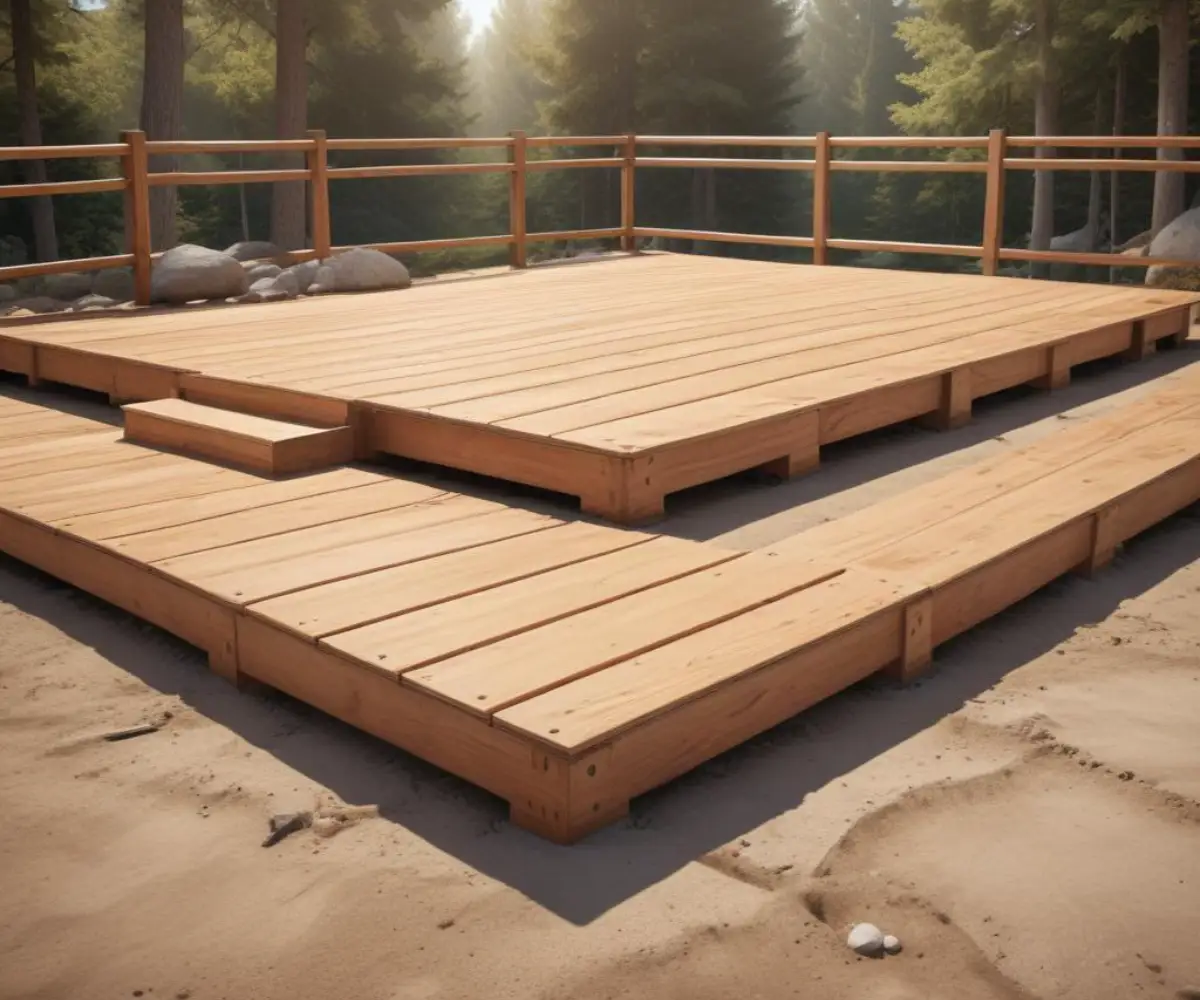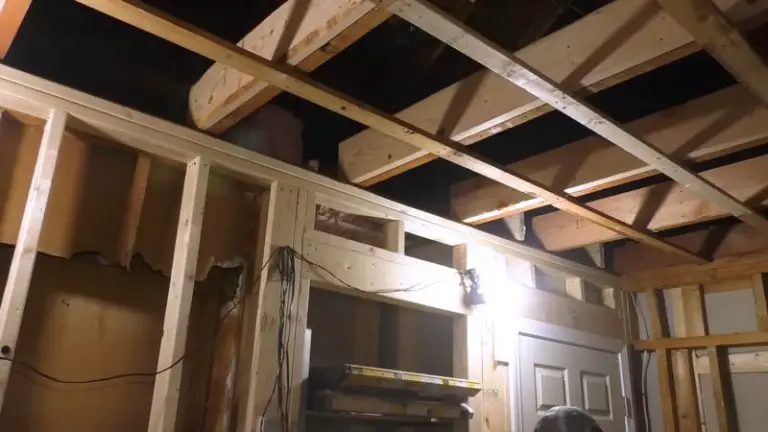Using 4×6 for Deck Posts? The Unspoken Risks You Must Know
You’re standing in the lumber aisle, planning your new deck. The standard 4×4 posts seem a bit flimsy, but the hefty 6×6 posts feel like overkill and a bigger hit to your budget. Then you see it: the 4×6 post. It seems like the perfect compromise, offering more strength than a 4×4 without the bulk of a 6×6. But can you actually use it for your deck posts?
This is a common question that leads many DIY builders down a path of confusion and potential danger. While it appears to be a logical middle ground, the reality of using 4×6 lumber for structural deck support is fraught with complications related to building codes, structural stability, and simple physics. Before you make a decision that could compromise the safety of your deck, it’s crucial to understand the full picture.
You'll Learn About
The Core Problem: Why a 4×6 Isn’t a “Better 4×4”
The fundamental issue with a 4×6 post is that its strength is not uniform. Unlike a square post like a 4×4 or 6×6, a rectangular 4×6 has a strong axis and a weak axis. This disparity is the source of most of the problems associated with its use as a primary support column.
Think of it like a ruler: it’s easy to bend across its thin dimension but incredibly difficult to bend along its wider edge. A 4×6 post behaves in the exact same way. Its ability to resist a load, particularly a lateral (sideways) load from wind or swaying, is drastically different depending on its orientation.
Understanding Post Dimensions and Load Paths
To grasp the issue, we must first look at the actual dimensions. A nominal 4×6 is actually 3.5 inches by 5.5 inches. This means that in one direction, it has the same profile as a 4×4 (3.5 inches), making it just as susceptible to bending and buckling forces along that weaker axis.
A deck’s structural integrity depends on a clear and robust load path, transferring the weight of the deck, furniture, and people safely to the ground. Deck posts are a critical link in this chain, managing both vertical (compressive) loads and lateral (bending) loads. While a 4×6 can handle significant vertical weight, its performance against lateral forces is dangerously inconsistent.
Unpacking the Structural Dangers of 4×6 Deck Posts
Using 4×6 posts is not just an unconventional choice; it’s a decision that can introduce significant structural vulnerabilities. The most critical factor is the post’s orientation, which can be difficult to control and often overlooked by amateur builders. If installed incorrectly, the post’s weakest side may be left to fight the strongest forces.
Imagine your deck being hit by a strong gust of wind or a group of people leaning against the railing. These forces will push on the deck frame, and the posts must resist that bending moment. If the 4×6 posts are oriented with their narrow 3.5-inch side facing that force, they offer no more stability than a standard 4×4 post, which is often considered inadequate for taller or larger decks.

The Building Code Barrier
Most local building codes are based on the International Residential Code (IRC). The IRC provides prescriptive guidelines for deck building, which are essentially pre-approved construction methods that don’t require a professional engineering sign-off. These codes almost exclusively reference 4×4 and 6×6 posts for deck support.
A 4×6 post is non-standard and generally not included in these prescriptive codes. This means that if you build with 4×6 posts, a building inspector is well within their rights to fail your inspection. They may require you to provide a structural engineer’s report to prove the design is safe, which can be a costly and time-consuming process. For most deck projects, sticking with code-approved 6×6 posts is the path of least resistance. The debate over post sizes is common, even when considering different structures; for instance, many wonder if they need pergola 4×4 or 6×6 posts, where similar principles of stability apply.
The Hardware Dilemma
Another significant, practical issue is finding the correct hardware. The market is flooded with post bases, anchors, and caps designed specifically for the standard dimensions of 4×4 and 6×6 posts. Finding structural-rated hardware for a 3.5″ x 5.5″ post is extremely difficult, if not impossible.
Using hardware designed for a different post size is a major safety hazard. A 4×6 post in a 6×6 base will be loose and unstable, while trying to modify other hardware can compromise its structural rating. This lack of proper connection points at the base and the beam creates a weak link in your deck’s frame.
Comparing Deck Post Options: 4×4 vs. 4×6 vs. 6×6
To make an informed decision, it’s helpful to see a direct comparison of the most common post options. The table below breaks down the key attributes of each, highlighting the critical weaknesses of the 4×6.
| Attribute | 4×4 Post | 4×6 Post | 6×6 Post |
|---|---|---|---|
| Nominal Size | 4″ x 4″ | 4″ x 6″ | 6″ x 6″ |
| Actual Size | 3.5″ x 3.5″ | 3.5″ x 5.5″ | 5.5″ x 5.5″ |
| Cross-Sectional Area | 12.25 sq. in. | 19.25 sq. in. | 30.25 sq. in. |
| Bending Strength | Uniformly low | High on wide axis, low on weak axis | Uniformly high |
| Code Acceptance | Limited (low decks only) | Rarely approved | Widely accepted standard |
| Hardware Availability | Excellent | Very poor | Excellent |
| Best Use Case | Decks under 30″ high, railings | Limited, specialized uses (not recommended for posts) | Decks of any height, the gold standard |
When Could a 4×6 Post Ever Be an Option? (And Why You Still Shouldn’t)
While the overwhelming evidence points against using 4×6 posts, there are niche scenarios where they might be considered, though alternatives are almost always better. For a very low-to-the-ground deck (often called a platform deck) where the posts are extremely short, the risk of bending is minimized.
In this limited case, a 4×6 might provide adequate vertical support. However, you must orient the 5.5-inch face to oppose the longest span of the deck to maximize its resistance to lateral sway. Even so, you will still face the challenges of passing inspection and finding proper hardware. Given these hurdles, a 6×6 post remains a superior and far simpler choice.
A Better Alternative: Laminated Posts
If you need a post with custom dimensions or superior strength, a better approach is to create a laminated post. This involves mechanically fastening multiple boards together, such as three 2x6s, to create a built-up post. This method often results in a post that is stronger and more stable than a solid piece of timber of the same size because the lamination process cancels out the weaknesses and warping tendencies of individual boards.
This is a technique used by professional builders for its strength and reliability. It also allows for customization while using standard, widely available lumber dimensions. This method avoids the pitfalls of non-standard solid posts like the 4×6.
Your Step-by-Step Guide to Choosing the Right Deck Post
Navigating the requirements for deck posts doesn’t have to be complicated. By following a logical process, you can ensure your deck is built on a safe, strong, and code-compliant foundation.
Step 1: Always Check Your Local Building Codes First
This is the most critical step. Before you buy any materials, contact your local building department or check their website for their specific deck construction guide. This document will tell you exactly what post sizes are required based on your deck’s height, size, and the load it will carry.
Step 2: Determine Your Deck’s Height
The height of the deck (measured from the ground to the underside of the beam) is a primary factor in post selection. As a general rule, any deck over 30 inches high should be supported by 6×6 posts as a minimum. Shorter posts are less susceptible to bending, but even a slight bend in a tall post can lead to structural failure, which is why a larger profile is necessary. If you’re dealing with existing posts that are compromised, you might be looking for information on how to straighten a bowed 4×4 post, but replacement with a larger dimension is often the better long-term solution.
Step 3: Consider the Total Load
Think about the intended use of your deck. Will it just hold a grill and a small table, or are you planning a large entertainment area with a hot tub? The total load—including people, snow, and heavy items—must be supported by the posts. A larger tributary area (the section of the deck each post supports) requires a stronger post. A 6×6 post provides a much larger margin of safety for heavy or unexpected loads.
Step 4: Prioritize Safety Over Small Cost Savings
While 4×6 posts might be slightly cheaper or more readily available in some cases, the potential cost of a failed inspection, structural failure, or property damage is immense. The price difference between 4×6 and 6×6 posts is minimal in the context of the entire deck project. Investing in 6×6 posts is an investment in safety and peace of mind. Remember, it’s crucial to use materials for their intended purpose; for example, you wouldn’t consider using deck boards for a fence without understanding the specific structural trade-offs, and the same logic applies to posts.
The Final Verdict: Steer Clear of 4×6 Deck Posts
So, can you use 4×6 for deck posts? The answer is a firm and resounding no for almost every situation. The combination of its directional weakness, lack of code acceptance, and the scarcity of proper hardware makes it an unsuitable and risky choice for supporting a structure that you, your family, and your friends will be using.
The allure of a “middle-ground” option is understandable, but your deck’s foundation is not the place to experiment with unconventional materials. The industry standard of using 6×6 posts for most deck applications exists for a reason: it provides robust, reliable, and uniform support that meets safety codes and ensures long-term stability. Stick with the proven standards to build a deck that is not only beautiful but, more importantly, unquestionably safe.

